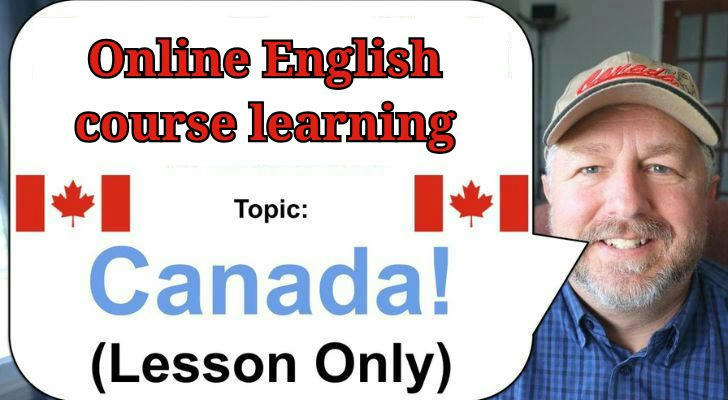English courses supported by Canadian government policies!
As a multicultural country, Canada offers a wide range of support services for immigrants to help them adapt to their new environment more quickly. Language plays a crucial role in integrating into the community and securing employment opportunities. To support this, the Canadian government provides English courses for newcomers. These courses not only help participants improve their language skills but also assist them in integrating smoothly into local life and increasing their career opportunities.

Course Overview
English courses in Canada are primarily offered through the LINC (Language Instruction for Newcomers to Canada) program, which is designed for newcomers holding permanent resident or refugee status. LINC courses are publicly funded and delivered through community organizations, colleges, and immigrant service agencies. Additionally, provinces and territories offer ESL (English as a Second Language) programs, some of which are government-subsidized to support more people in learning English and adjusting to their new environment.
Benefits of Government Supported Courses
💰 No Additional Tuition Costs – Government-funded courses cover tuition fees and may also provide transportation subsidies and childcare services for eligible participants.
🗣 Practical Skills Training – Course content is tailored to newcomers, covering practical English for daily life, communication skills, and workplace English, ensuring that participants can confidently navigate both personal and professional settings.
🏡 Support for Community Integration – These courses introduce students to Canadian culture, customs, and legal regulations, helping them integrate more smoothly.
💼 Enhanced Employment Opportunities – Graduates will meet basic language requirements for job applications and career advancement, increasing their employability.
How to Access English Courses?
There are several ways for new immigrants to take government-supported English courses in Canada. Here are the main options and application steps:
1️⃣ LINC (Language Instruction for Newcomers to Canada) Program
LINC is the federal government’s main language training program, designed to help newcomers integrate into Canadian society.
✅ Check Eligibility – LINC courses are available to permanent residents (PR) and government-recognized refugees. Temporary residents and Canadian citizens are not eligible.
✅ Take a Language Assessment – Visit a local immigrant service center (e.g., YMCA or a newcomer center) for a Canadian Language Benchmarks (CLB) assessment.
✅ Register for a Course – Once assessed, participants are placed in an appropriate LINC course and can register at a local immigrant service agency, college, or community center.
📍 Examples of LINC Course Providers:
YMCA Immigrant Services (available in major cities like Toronto and Vancouver)
SUCCESS (Vancouver-based, specializing in services for Asian newcomers)
New Brunswick Multicultural Council (NBMC)

2️⃣ ESL (English as a Second Language) Courses
ESL programs are available across provinces and territories, with some being government-subsidized. These courses accommodate a wide range of applicants, including work permit holders and international students.
📌 Application Process:
🔍 Find Local ESL Providers – Check websites of school boards, local colleges, or community centers. For example, British Columbia community colleges and Alberta vocational training centers offer ESL programs.
📄 Submit an Application – Many ESL courses allow online registration. Applicants can visit the institution’s website, complete the application form, and submit proof of identity.
💰 Inquire About Financial Support – Some institutions offer subsidies for textbooks or childcare services.
📍 Examples of ESL Course Providers:
Seneca College, George Brown College (community colleges)
Public school board programs (e.g., Toronto District School Board, Vancouver School Board)
3️⃣ Public Library Language Programs
Many public libraries offer English learning programs, particularly in areas with large immigrant populations.
📌 Application Process:
🏛 Visit a Local Public Library – Examples include Toronto Public Library (TPL), Vancouver Public Library (VPL), and Montreal Public Library.
🆔 Apply for a Library Card – Most courses require library membership. Bring proof of identity and residence to register.
📅 Enroll in a Course – Many programs allow online registration, or applicants can ask library staff for guidance.
📍 Examples of Libraries Offering Language Programs:
Toronto Public Library (TPL)
Vancouver Public Library (VPL)
Montreal Public Library (BAnQ)

4️⃣ Online English Courses (Government-Supported Programs)
The Canadian government supports several online learning platforms that provide flexible English courses, ideal for those unable to attend in-person classes.
📌 Application Process:
🖥 Choose a Platform – Recommended platforms include Learning LINC, Mango Languages, and Duolingo (although Duolingo is not government-funded, it is widely used by immigrants).
📝 Create an Account – Registration is required, and for some programs (such as Learning LINC), a LINC course referral may be needed.
📚 Access Learning Resources – Platforms offer video lessons, online exercises, and conversation practice.
📍 Recommended Online Learning Platforms:
Learning LINC (online LINC courses)
Mango Languages
Duolingo (not government-funded but popular among learners)
5️⃣ Provincial and Local Government Language Support Programs
Each province in Canada provides additional language learning support, with specific resources and funding varying by region.
📌 Application Process:
🌎 Check Provincial Programs – Provincial government websites list available language learning resources. For example, Alberta Supports (Alberta) and Ontario Immigrant Nominee Program (OINP) (Ontario) provide language assistance.
📄 Submit an Application – Requirements and procedures vary by province. Applicants can complete forms through the provincial immigration services website.
📊 Language Assessment & Course Placement – Most provincial programs require a CLB assessment to determine the appropriate course level.
📌 Benefits of Completing an English Course
📢 Improved Communication Skills – Learn practical English for daily life and work.
💼 Increased Employment Competitiveness – Meet language requirements for job applications and career growth.
🎓 Foundation for Further Education – Earning a CLB certificate or course completion certificate can support applications for vocational training programs.
🔚 Conclusion
Canada’s English courses provide valuable support for newcomers, helping them integrate into society and enhance their career
